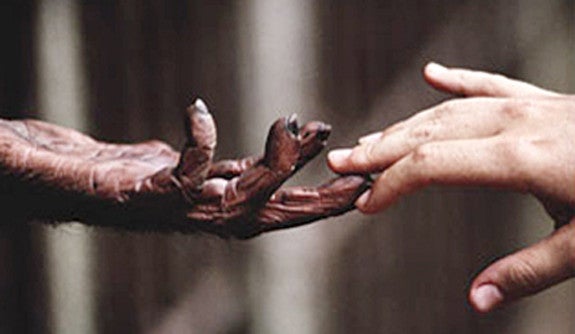Development of hands and feet may help unlock evolution’s toolkit

Thousands of sequences that control genes are active in the developing human limb and may have driven the evolution of the human hand and foot, a comparative genomics study led by Yale School of Medicine researchers has found
The research, published online July 3 in the journal Cell, does not pinpoint the exact genetic mechanisms that control development of human limbs, but instead provides scientists with the first genome-wide view of candidates to investigate.
“We now have a parts list that may account for these biological changes,” said James P. Noonan, associate professor of genetics, investigator for the Kavli Institute and senior author of the study.
Uniquely human features in the limbs can be seen early in human development, suggesting the genetic changes that underlie these traits are active in the human embryo. Previous studies compared the human genome to genomes of other primate species in order to identify changes in genetic sequences that may have occurred during human evolution. Noonan and colleagues used this approach in 2008 to identify a single human gene regulatory sequence showing human-specific activity in the developing limb that may have contributed to the evolution of the human thumb. However, it was unclear at the time how many of these elements exist within the human genome.
To address this, Noonan’s group looked for differences in the activity of these regulatory sequences across the entire genomes of human, rhesus monkey, and mouse during limb development.
The team built maps of active gene regulatory sequences in developing limbs from each species using a biochemical marker known to identify such sequences. Their analysis suggests that while the genetics of limb development are generally similar in all three species, a fraction of regulatory sequences are active specifically in the human embryonic limb. These sequences likely gained activity since humans’ divergence from the rhesus monkey about 25 million years ago.
Noonan said he plans to transfer some of these human-specific regulatory elements into the mouse genome to investigate what aspects of human limb development they may control.
“It has been difficult to understand how human traits evolved, because we didn’t have any idea where the important genetic changes might be,” Noonan said. “Now we do, and we have the experimental tools to determine what biological effects these changes may have. Our study also provides a roadmap for understanding other human-specific traits that arise during development, such as increased brain size and complexity.”
The work was funded by the National Institutes of Health, the Edward J. Mallinckrodt Jr. Foundation, and the National Science Foundation.
The lead authors of the study are Justin Cotney and Jing Leng, both in the Noonan laboratory. Other Yale authors include Jun Yin, Steven K. Reilly, Laura E. DeMare, Deena Emera, Albert E. Ayoub, and Pasko Rakic.
Media Contact
Bill Hathaway: william.hathaway@yale.edu, 203-432-1322